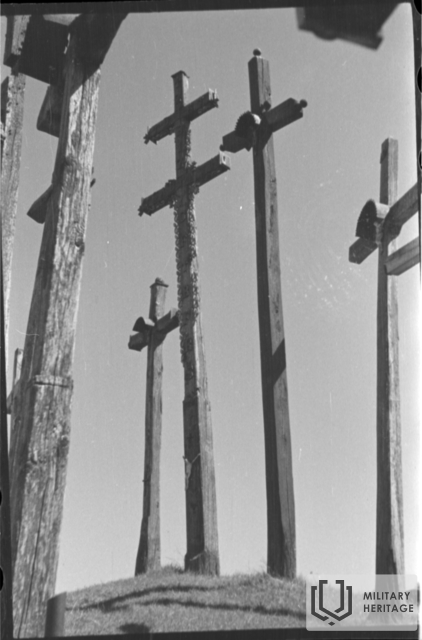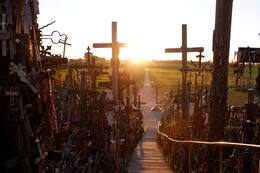The demolition of the Hill of Crosses: evidence of the most active destruction
During the Soviet era, the Hill of Crosses was destroyed by the Soviet authorities several times, one of the organized demolitions took place in the second half of the 20th century, when, on the instructions of the party, about 300 men were mobilized to carry out this work, and the process was carefully planned and coordinated.
I don’t remember exactly what year it was. The party secretary Pilelis calls and says: “Kuzma, tomorrow prepare a good lunch for three hundred men – good, as it should be”. I ask: “What kind of assortment?” – “No, at your discretion, a strong, manly lunch and half a liter of vodka for two men. Get a reliable driver so that there is no chatter. Tomorrow you will receive a signal – where and when to bring. No waiters. You will come and bring it yourself personally. No one will know where you are taking it or what you are taking.”
The next day I sit ready, waiting. Someone else calls. They ask: “Did you get an order? Pack lunch and be in Meškuičiai at the appointed time. Only two people – the driver and you.” I ask: “Maybe civil defense classes?” He doesn’t answer anything specific.
We arrive in Meškuičiai. I look - everywhere there are militiamen, soldiers. A man approaches the car. We drive together. We drive up, I look - smoke is rising, some bonfires are burning. We drive further. Near the Hill of Crosses, there is a crowd - full of people, cars, working, demolishing. Secretary Pilelis arrived. Some helpers appeared, took thermoses with lunch, dishes, distributed food, vodka, sat down, ate, drank. They returned the dishes. I was ordered: "You didn't see anything, you didn't hear anything, go home!" "What about the settlement?" I ask. "The money will be transferred to the account," he replies. And that's it.
I saw: bonfires were burning, cranes were loading metal, many men were burning crosses. All locals, you can see. Maybe they were activists, or maybe they were also ordered to come to the specified place at the specified time - as if to some civil defense exercise. Young. And everyone needed a drink. They demolished more than once, I only saw it once..."
Related timeline
Related objects
Hill of Crosses in Šiauliai
The Hill of Crosses is located near the Šiauliai-Riga railway line, about 12 km from the city of Šiauliai.
The Hill of Crosses is a unique and symbolic place in Lithuania, near Šiauliai, which has become a powerful symbol of faith, resistance and hope. The history of the hill dates back to the 19th century, when after the 1831 uprising, people began to build crosses to honor the fallen rebels. This tradition was revived after the 1863 uprising, and over time, the hill became a place where Lithuanians would leave crosses for remembrance, prayer or petition.
During the Soviet era, the Hill of Crosses became a symbol of Lithuanian resistance. The Soviet government tried to destroy the hill several times, the crosses were bulldozed, and the territory was protected by the KGB. In 1978–1979, there were even plans to flood the Hill of Crosses with water. However, people secretly rebuilt the crosses at night, and the Hill of Crosses filled up again. In this way, the hill became a symbol of the strength, resilience, and hope of the nation. Since 1988, the construction of crosses has no longer been prohibited.
After Lithuania regained its independence, the Hill of Crosses became even more popular, and in 1993 it was visited by Pope John Paul II, who blessed the hill and called it a unique place of prayer and hope. Today, the Hill of Crosses is a place of pilgrimage, where people from all over the world leave crosses and pray. It is a place that symbolizes Lithuanian faith, memory, and the desire to preserve their culture and traditions.
On the mountain and its slopes there are more than 200,000 various crosses, chapel poles, statues of saints and paintings, more than 50 crosses are listed in the Register of Cultural Properties, and many rosaries and crucifixes are hung on them. The Hill of Crosses is open to visitors, with oak stairs and paths.







